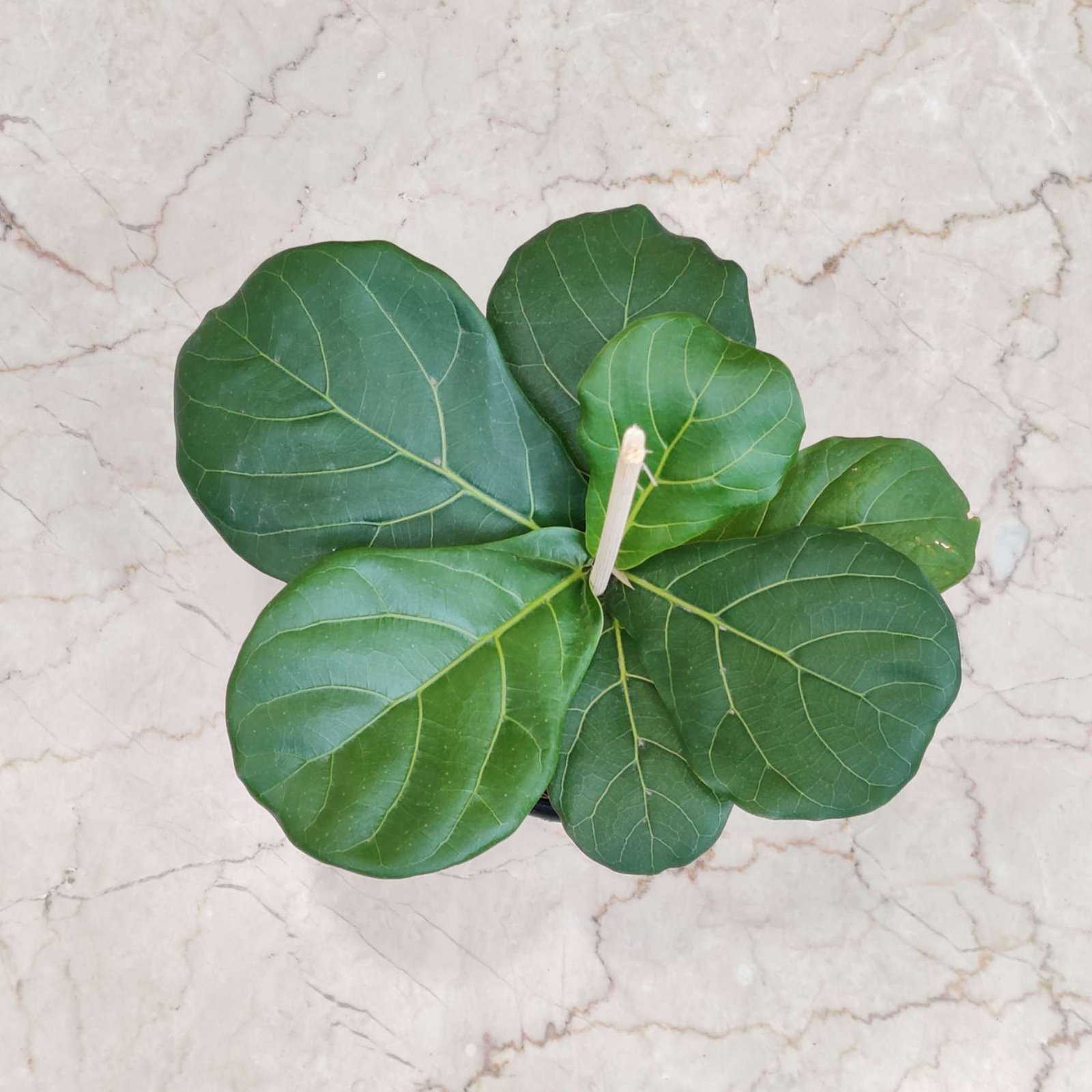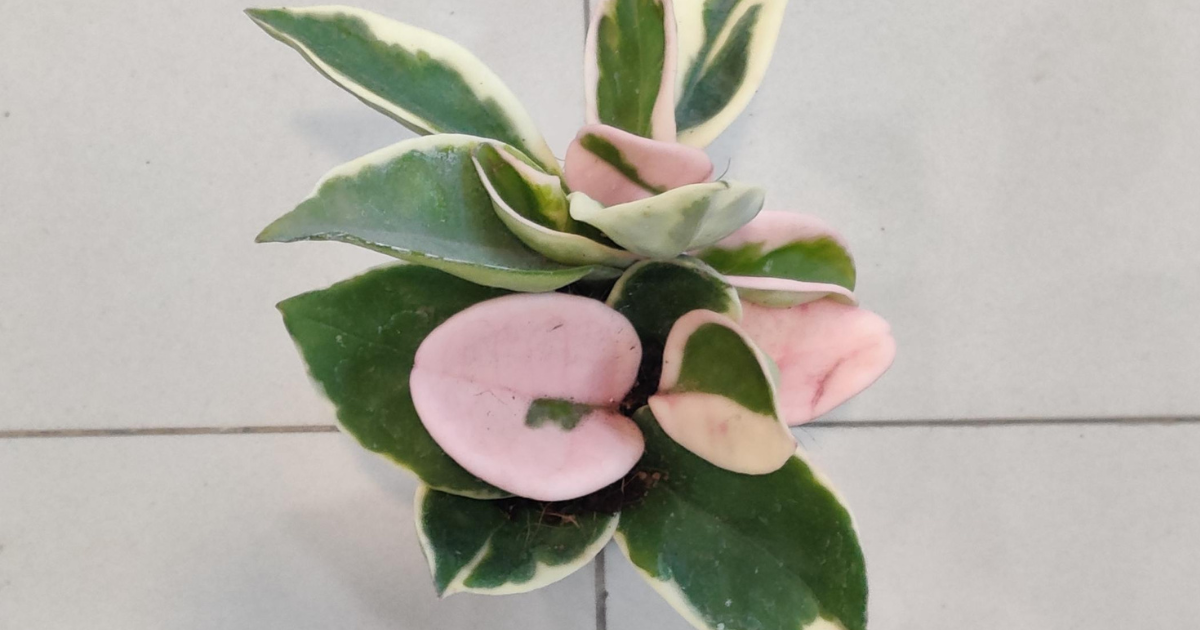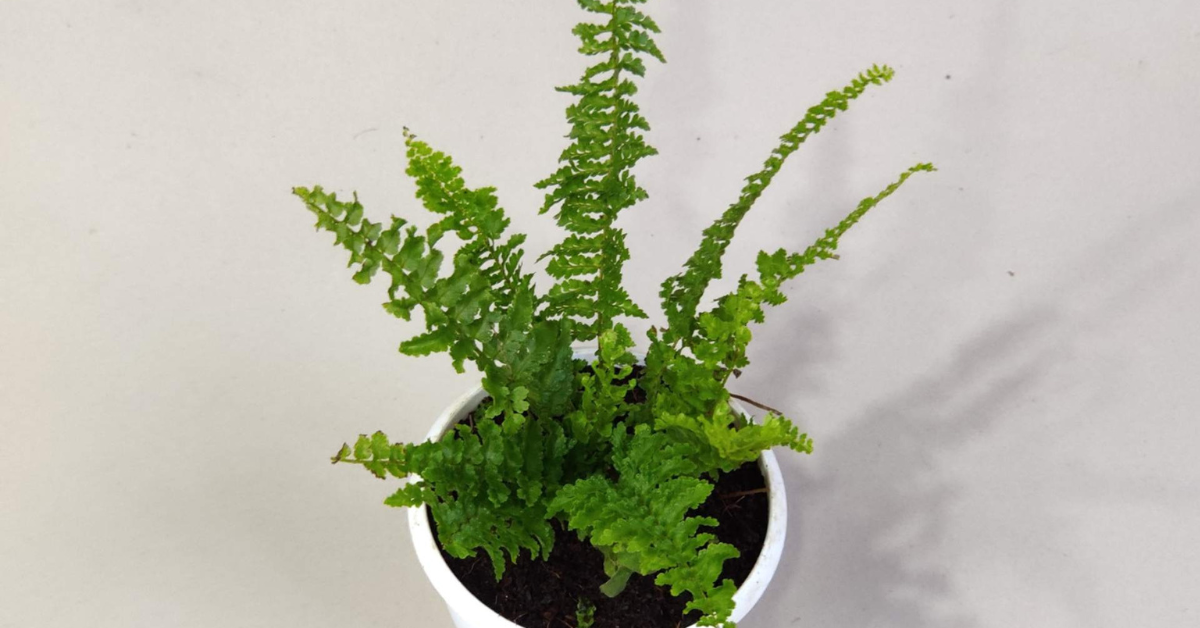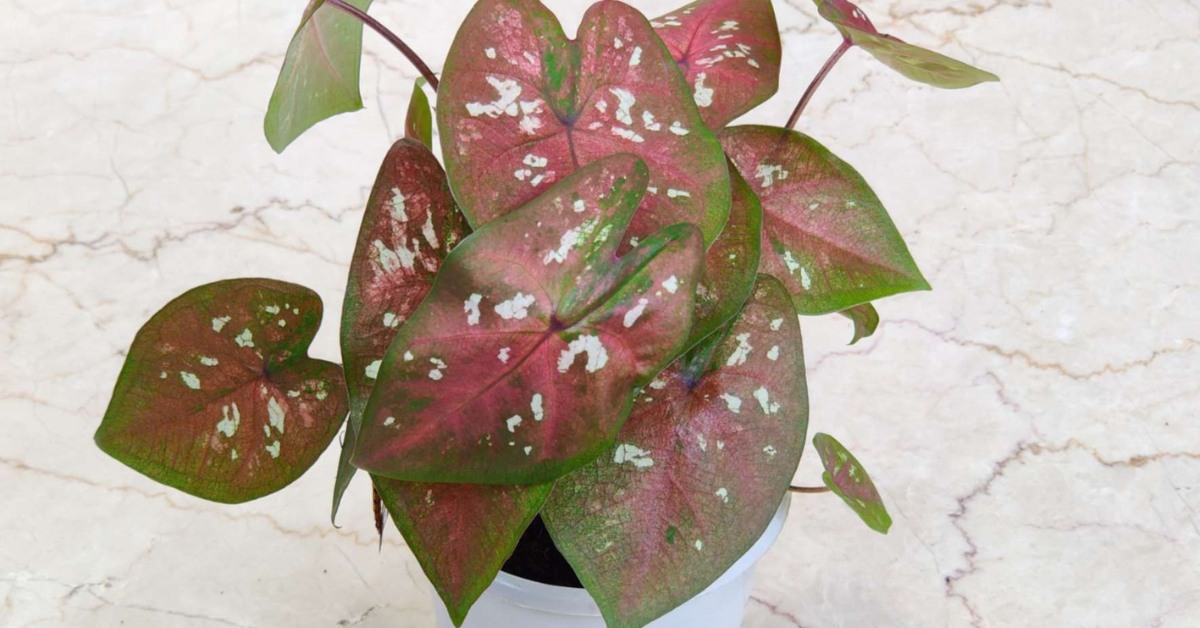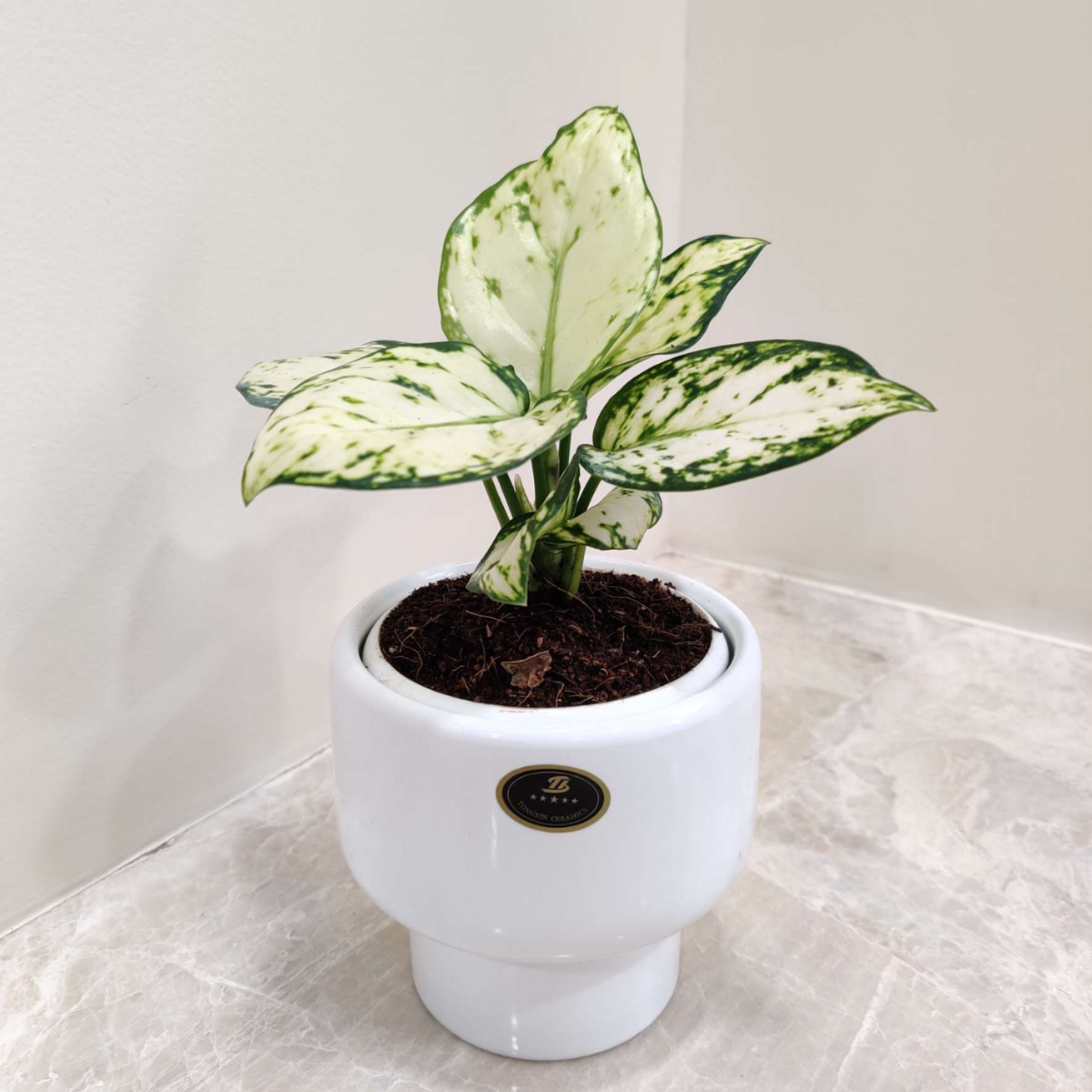The Fiddle Leaf Fig (Ficus lyrata) has become one of the most popular indoor plants to buy for modern homes. Loved for its dramatic, violin-shaped leaves and elegant upright growth, this tropical beauty has turned into a must-have décor statement featured in design magazines and adored by plant enthusiasts worldwide.
More than just a trendy houseplant, the fiddle leaf fig brings air-purifying benefits, mood-boosting greenery, and timeless style to any space. Whether you want to buy a fiddle leaf fig online or are looking for the best growing tips and care guide, this plant rewards you with lush foliage and a bold presence that instantly elevates your interiors.
While it’s sometimes called “finicky,” mastering fiddle leaf fig care is easier than you think. With the right knowledge about light, watering, soil, humidity, pruning, and propagation, even beginners can learn how to grow and care for a fiddle leaf fig successfully.
This complete fiddle leaf fig growing guide covers everything—from its origins and benefits to potting, repotting, styling ideas, troubleshooting, and propagation tips. Whether you’re a first-time plant parent or an experienced indoor gardener, this article will help you confidently grow a thriving fiddle leaf fig that becomes the centerpiece of your home.
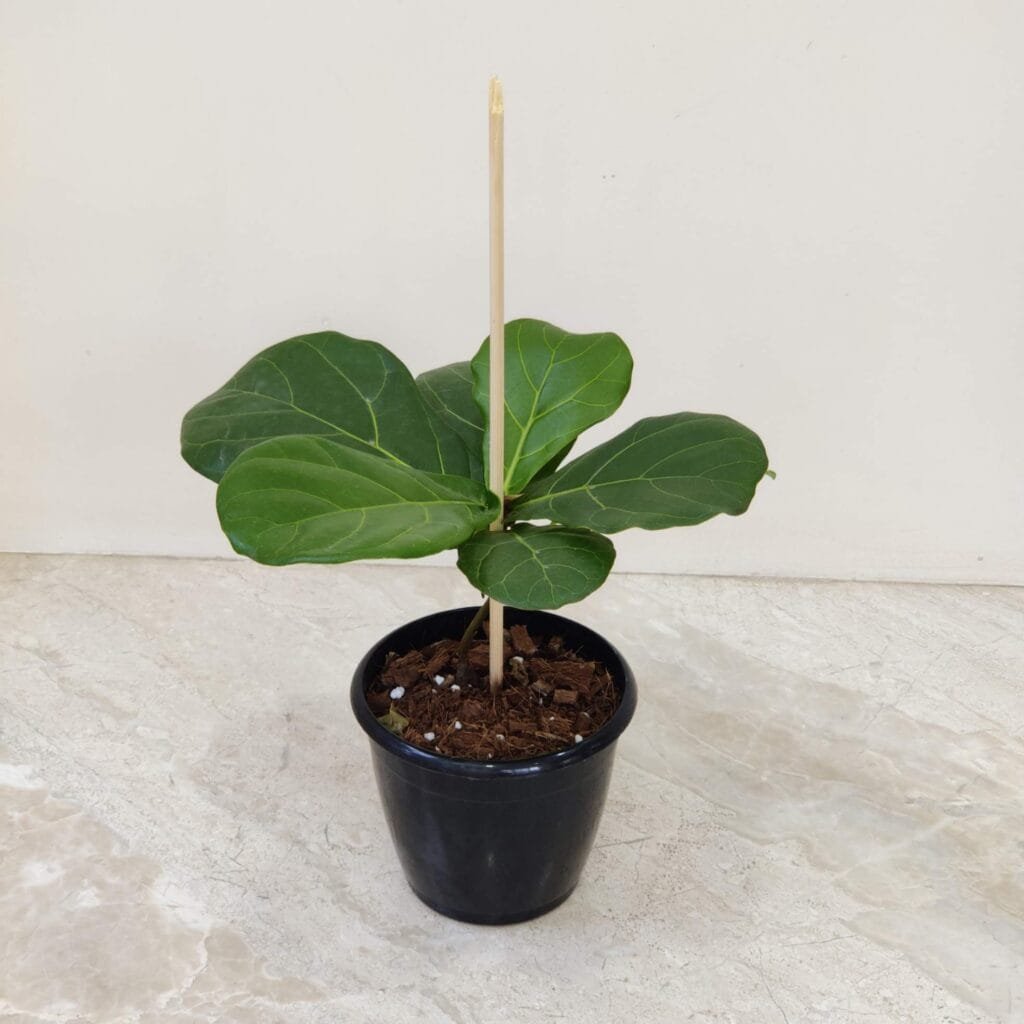
Fiddle Leaf Fig Plant Profile
Before diving into care and styling, here’s a quick overview of the Fiddle Leaf Fig (Ficus lyrata):
| Feature | Details |
|---|---|
| Common Names | Fiddle leaf fig, Banjo fig |
| Botanical Name | Ficus lyrata |
| Family | Moraceae |
| Plant Type | Broadleaf evergreen |
| Mature Size | Up to 50 ft. outdoors, 6–10 ft. indoors |
| Sun Exposure | Bright, indirect light; part shade outdoors |
| Soil Type | Loamy, medium moisture, well-draining |
| Soil pH | 6.0 – 7.0 (slightly acidic to neutral) |
| Bloom Time | Rarely flowers indoors |
| Flower Color | Insignificant |
| Hardiness Zones | USDA zones 10–12 |
| Native Area | Tropical Western Africa |
| Toxicity | Toxic to humans and pets if ingested |
Safety Note: Keep your fiddle leaf fig out of reach of pets and children, as ingestion may cause stomach irritation and other health issues.
Benefits of Fiddle Leaf Fig
Adding a fiddle leaf fig to your space isn’t just about looks—it can also enhance your home environment in several ways.
- Air Purification – Like many indoor plants, fiddle leaf figs help filter toxins such as formaldehyde, benzene, and toluene, promoting cleaner indoor air.
- Aesthetic Appeal – Their architectural leaves and bold silhouette make them an instant statement piece, often used by designers to elevate home décor.
- Mood Enhancement – Research shows that large, healthy greenery reduces stress and boosts mood, helping create a calming atmosphere.
- Noise Softening – Their broad leaves can help absorb sound, naturally muffling noise in busy areas of the home.
Light Requirements: Bright but Gentle
Light is perhaps the most important factor in fiddle leaf fig care. These plants evolved under rainforest canopies where light is filtered, so replicating those conditions indoors is essential.
- Ideal Light: Place your fiddle leaf fig in a spot that gets bright, indirect light for at least six hours per day. An east-facing window is ideal, offering gentle morning sun without the harsh afternoon heat.
- Too Much Light: Direct, intense sunlight (especially from west-facing windows) can scorch the leaves, leaving light brown or bleached spots. Use sheer curtains to filter rays.
- Too Little Light: Insufficient light results in slow growth, leaf drop, or brown spots on lower leaves. If natural light is limited, consider using a grow light to supplement.
- Pro Tip: Rotate your plant every few weeks to ensure even growth and prevent it from leaning toward the light source. Wipe the leaves weekly to remove dust, which helps maximize photosynthesis.
Watering: Finding the Perfect Balance
Watering mistakes are the number one cause of fiddle leaf fig problems. These plants are highly sensitive to both overwatering and underwatering.
- When to Water: Wait until the top 1–2 inches of soil feels dry before watering.
- How to Water: Use room-temperature water, and water thoroughly until liquid drains from the bottom. Always empty the saucer to prevent root rot.
- Underwatering Signs: Crispy brown edges, wilted leaves, and leaf drop.
- Overwatering Signs: Dark brown spots, soggy soil, yellowing leaves, and a foul smell—indicating root rot.
Pro Tip: Flush the soil once a month with clean water to prevent salt build-up from fertilizers and tap water.
Temperature and Humidity: Mimicking the Tropics
As rainforest natives, fiddle leaf figs thrive in warm, humid, and stable environments.
- Ideal Temperature: 65–75°F (18–24°C). They tolerate 60–85°F but should never be exposed to below 50°F (10°C).
- Humidity Needs: 30–65% humidity is ideal. Dry air can cause crispy edges.
- Boosting Humidity:
- Group plants together
- Place the pot on a pebble tray
- Use a humidifier, especially in winter
- Avoid Drafts: Keep away from open windows, heaters, and air conditioning vents. Sudden changes in temperature can cause leaf drop.
Soil and Fertilization: Nourishing Your Fig
A fiddle leaf fig’s large, glossy leaves require nutrient-rich soil and regular feeding.
- Best Soil: A well-draining, loamy mix is essential. A blend of peat moss + perlite, or a 50/50 cactus and houseplant mix, works well.
- pH Range: Slightly acidic to neutral (6–7).
- Fertilizer: During the growing season (spring and summer), feed monthly with a high-nitrogen fertilizer (NPK ratio 16-5-11). Avoid fertilizing in fall and winter when growth slows.
Propagation Techniques
One of the joys of owning a fiddle leaf fig is the ability to propagate new plants from cuttings. This not only saves money but also makes a meaningful gift for friends and family.
Step-by-Step: How to Propagate Fiddle Leaf Fig
- Select a Healthy Stem – Choose a stem with at least two leaves and a visible node.
- Make a Clean Cut – Use sterilized pruning shears to cut just below the node.
- Remove Lower Leaves – Keep 1–2 leaves at the top and strip away the rest.
- Optional Rooting Hormone – Dip the cut end into rooting hormone to encourage stronger root growth.
- Choose Your Method:
- Water Propagation: Place the cutting in a clear jar of room-temperature water, ensuring the node is submerged. Change water weekly. Roots appear in 4–8 weeks.
- Soil Propagation: Insert the cutting into moist, well-draining soil. Cover with a plastic bag (humidity dome) to retain moisture. Roots usually form in 2–3 weeks.
- Transplanting – Once roots are 2–3 inches long, move the cutting into a pot with fresh potting mix.
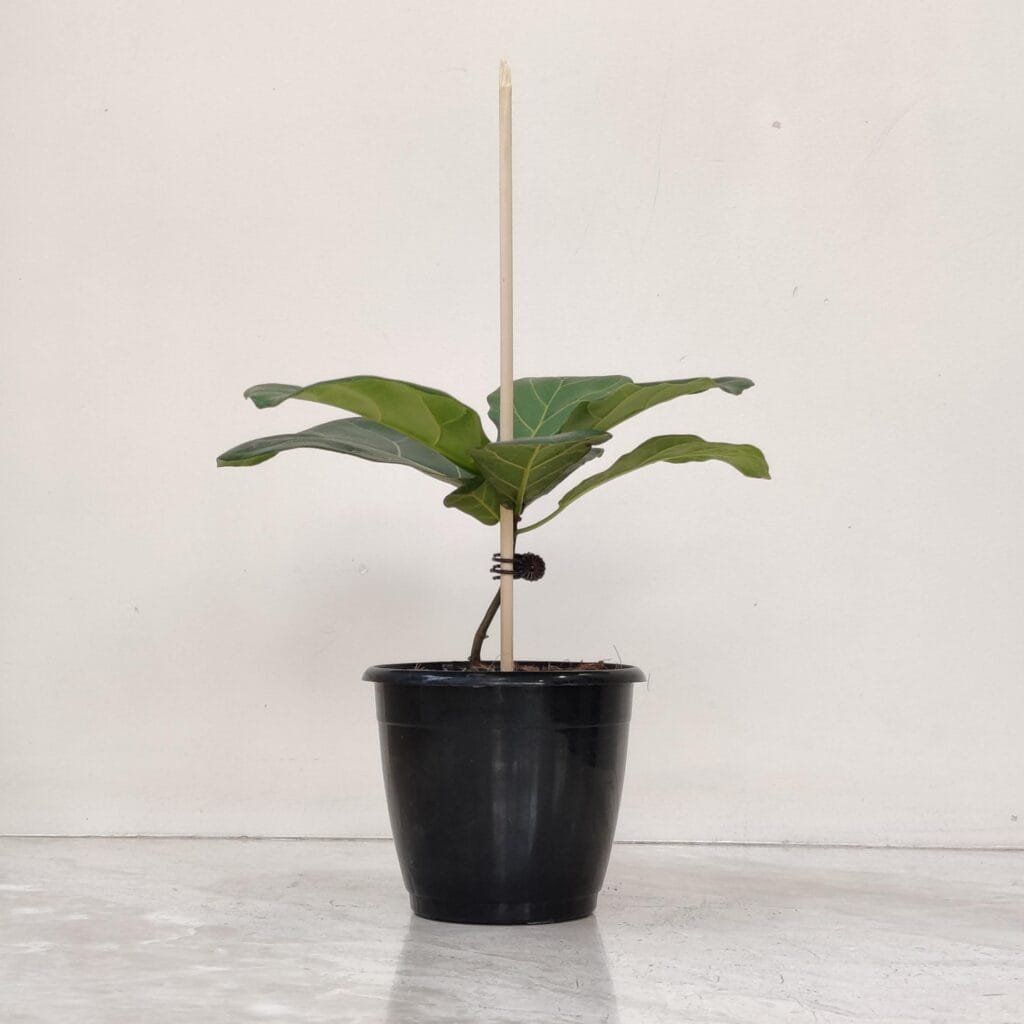
Potting Guide for Fiddle Leaf Fig
Choosing the right pot and soil is critical to your fiddle leaf fig’s success.
Choosing the Right Pot
- Size: Pick a pot 2–3 inches larger than the root ball.
- Material: Ceramic, plastic, or terracotta all work—but ensure the pot has drainage holes.
- Style Tip: For aesthetics, place the grow pot inside a decorative ceramic planter that matches your interior.
Best Potting Mix
- Use a high-quality, well-draining tropical mix. Ingredients like peat moss, perlite, coco coir, and pine bark create the ideal structure.
- Maintain a pH between 6–7 for optimal growth.
Repotting Steps
- Gently remove the plant from its pot.
- Loosen tightly wound roots.
- Add fresh soil at the bottom of the new pot.
- Place the plant inside and backfill around roots.
- Water thoroughly and place in bright, indirect light.
Potting Tips
- Repot every 1–2 years, ideally in spring.
- Avoid oversized pots that hold excess moisture and risk root rot.
- Always allow water to drain freely.
Pruning and Shaping: Encouraging Healthy Growth
Pruning helps maintain size, shape, and health.
- When to Prune: Late spring or summer.
- How to Prune:
- Remove damaged, yellowing, or crossing leaves
- Trim brown edges (if most of the leaf is healthy)
- To create a tree-like canopy, top the plant by cutting the main trunk above a node once it reaches 5 feet tall.
- Outcome: Healthy plants will sprout two new branches from pruning cuts, creating a fuller look.
Common Problems and Solutions
Like all houseplants, fiddle leaf figs can experience stress. Here are common issues and fixes:
| Problem | Symptoms | Cause | Solution |
|---|---|---|---|
| Brown Spots | Dark spots or edges | Overwatering, root rot, cold drafts | Adjust watering, repot if necessary |
| Crispy Edges | Dry, curled leaves | Underwatering, low humidity | Increase watering, boost humidity |
| Leaf Drop | Green leaves falling | Sudden temperature changes, low light | Keep environment stable, add grow lights |
| Yellowing Leaves | New leaves turn yellow | Bacterial infection | Remove affected leaves, repot in fresh soil |
| Pests | Webbing, sticky leaves | Spider mites, scale, mealybugs | Wipe with soapy water or use neem oil |
Want to diagnose and fix issues faster? Explore our in-depth article on Fiddle Leaf Fig Plant Problems for solutions to common care mistakes.
Styling Ideas with Fiddle Leaf Fig
Beyond plant care, styling is what makes the fiddle leaf fig a true design centerpiece. Here are creative ways to decorate your home with this iconic plant:
- Floor Statement Piece – Place in a large ceramic planter in your living room, entryway, or beside furniture to create a dramatic focal point.
- Clustered Greenery – Pair your fiddle leaf fig with smaller plants like pothos or snake plants to achieve an urban jungle look.
- Minimalist Corner – A simple monochrome pot with the plant standing alone in a bare corner creates a chic, minimal vibe.
- Double-Plant Feature – Position two fiddle leaf figs symmetrically near doorways or a fireplace for a balanced, luxurious aesthetic.
- Mix & Match Planters – Use woven baskets, concrete pots, or modern planters to complement different interior styles (Scandinavian, industrial, bohemian).
Buying a Healthy Fiddle Leaf Fig
When shopping for your fiddle leaf fig:
- Inspect the undersides of leaves for pests.
- Avoid plants with numerous brown spots (they won’t recover).
- Ensure the soil isn’t waterlogged, as this may cause hidden root rot.
Final Thoughts
The fiddle leaf fig may have a reputation for being demanding, but with consistent light, water, humidity, and care, it can thrive for years. This plant is not only a rewarding challenge but also a dramatic addition to your home décor. The fiddle leaf fig belongs to the Moraceae family, just like the Rubber Plant (Ficus elastica). Wondering which is better for your home? Read our full guide on Rubber Plant vs. Fiddle Leaf Fig.
Treat it like the tropical beauty it is, and your fiddle leaf fig will reward you with lush foliage, impressive height, and a touch of natural luxury.
FAQs
1. Why are my fiddle leaf fig leaves turning brown?
Brown edges usually mean underwatering or low humidity, while dark brown spots often point to overwatering or root rot. Adjust your watering schedule and check humidity levels.
2. How often should I water a fiddle leaf fig?
Water when the top inch of soil is dry—typically every 7–14 days, depending on your home environment.
3. Can a fiddle leaf fig survive in low light?
It can survive but will grow more slowly and may drop lower leaves. For best growth, place near a bright, east-facing window.
4. When should I repot my fiddle leaf fig?
Repot young plants annually in spring. Mature plants can be refreshed by replacing the topsoil.
5. Are fiddle leaf figs safe for pets?
No. Fiddle leaf figs are toxic to cats, dogs, and humans if ingested. Keep out of reach.
6. How do I propagate a fiddle leaf fig?
You can propagate via stem cuttings in water or soil. Roots usually develop in 2–3 weeks before potting.
7. Why are my fiddle leaf fig’s leaves dropping?
Leaf drop can be caused by sudden temperature changes, insufficient light, or overwatering. Ensure stable conditions and consistent care.
8. Should I fertilize in winter?
No. Fiddle leaf figs go dormant in winter. Fertilize monthly only during spring and summer.

Transform Your Space with Ficus Plants
Bring timeless beauty and lush greenery into your home with our exclusive collection of Ficus plants. From the iconic Fiddle Leaf Fig to other stunning varieties, each plant adds elegance, fresh air, and a touch of nature to your interiors.
Shop Ficus Plants Now and grow your indoor jungle with style and ease.

